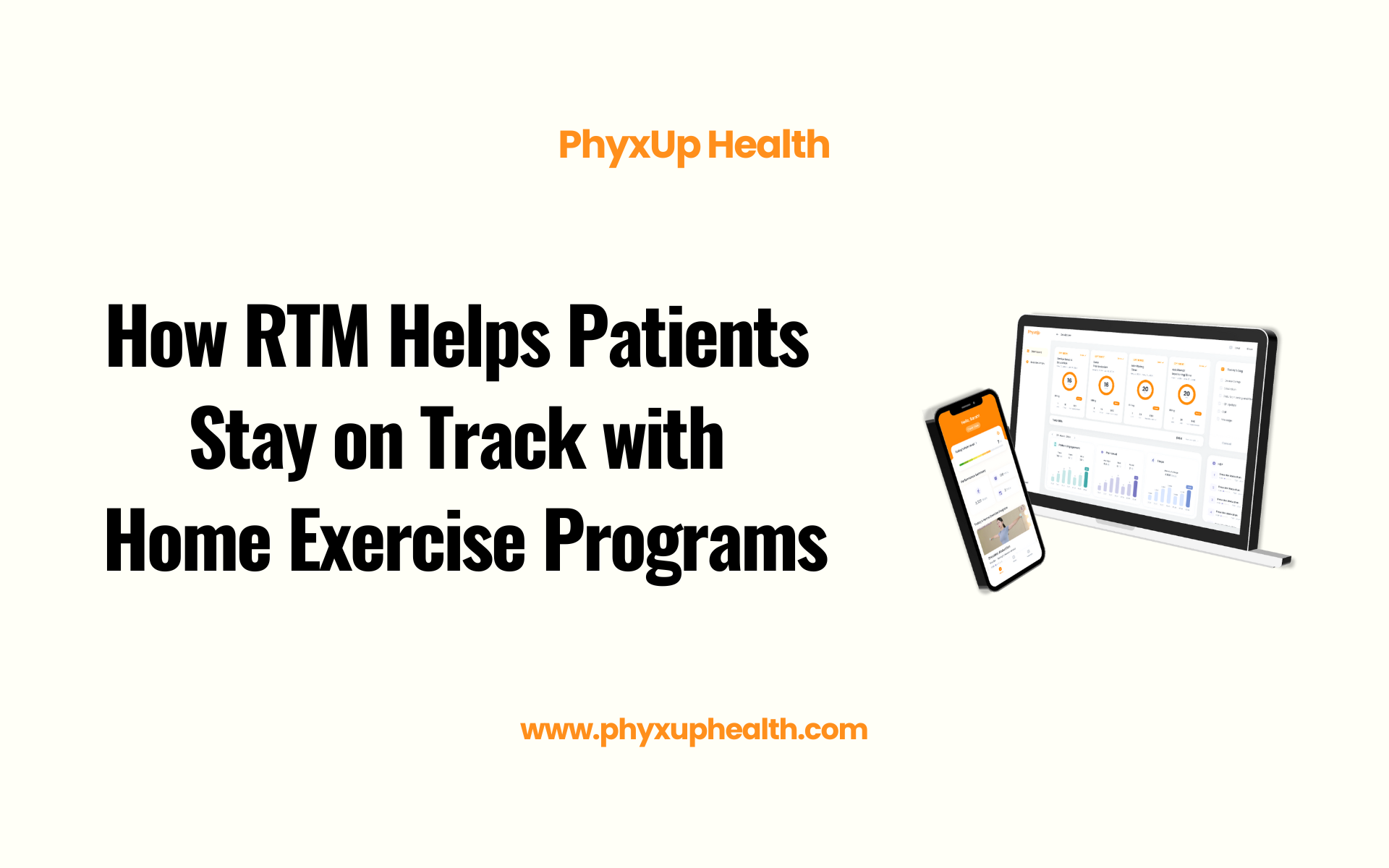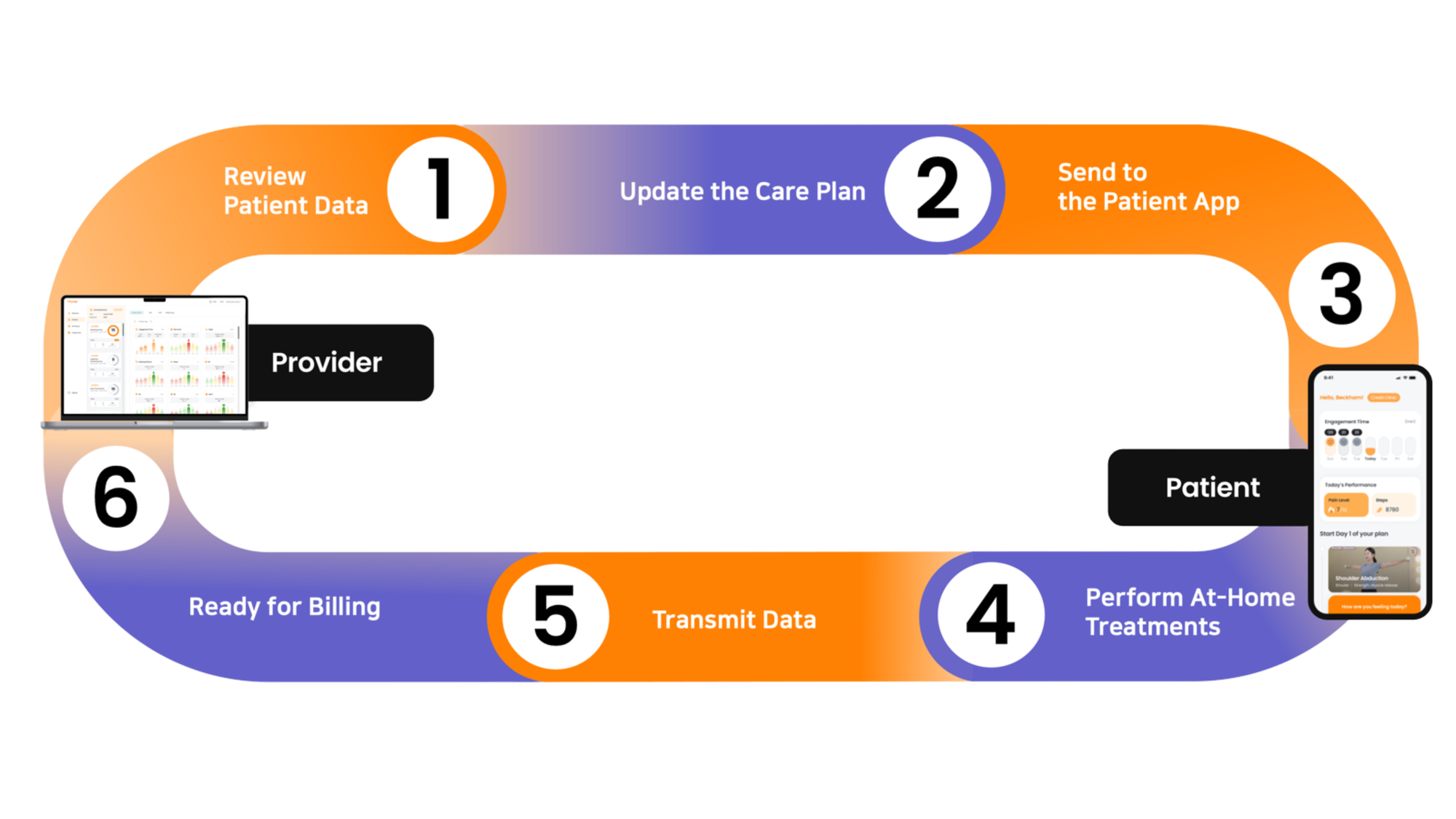How Remote Therapeutic Monitoring (RTM) Helps Patients Stay on Track with Home Exercise Programs

The Challenge of Staying Committed to Home Exercise Programs
Home Exercise Programs (HEPs) are a critical part of physical therapy and rehabilitation. They help patients continue making progress outside of the clinic, building on the improvements made during therapy sessions. However, many patients struggle with staying consistent with their exercises, often due to a lack of motivation, forgetfulness, discomfort, or uncertainty about whether they are performing the exercises correctly.
This is where Remote Therapeutic Monitoring (RTM) steps in. By combining technology with real-time progress tracking and personalized care, RTM helps patients stay engaged, accountable, and on track, which ultimately leads to better rehabilitation outcomes.
What is Remote Therapeutic Monitoring (RTM)?
Remote Therapeutic Monitoring (RTM), enables healthcare providers to remotely monitor a patient's progress. Using web or mobile apps, RTM helps track patients’ exercises, send HEPs, and maintain a connection between the therapist and patient—even when they aren’t in the clinic.
Key Features of RTM:
- Mobile Apps for Home Exercise Programs
Patients can complete their personalized HEPs through mobile apps provided by their therapists. These programs are tailored to the patient's recovery needs, which improves outcomes and encourages consistent participation. - Real-Time Data Tracking and Monitoring
RTM tools track patients' progress in real-time, allowing therapists to make immediate adjustments to treatment plans. This ensures that the patient always receives the most effective care at the right time.

How RTM Improves Patient Engagement and Accountability
Staying on track with HEPs can be challenging for patients. RTM provides structure, motivation, and support to help patients remain consistent with their exercises.
- Real-Time Feedback for Consistency and Motivation
RTM apps provide immediate feedback on patients' progress, showing completed sessions, sending reminders, and displaying progress trends. This helps both patients and therapists stay on top of the program's adherence.
- Personalized Care Plans Based on Real-Time Data
With RTM, therapists can tailor exercise plans in real-time based on the patient's progress data. If a patient experiences discomfort or struggles with a particular exercise, therapists can adjust the plan remotely to ensure the patient remains comfortable while still making progress.
3. Encouragement and Recognition to Boost Morale
RTM platforms allow therapists to send personalized messages or recognition when patients achieve milestones. This acknowledgment not only boosts the patient’s confidence but also reinforces their commitment to recovery, as they feel their efforts are noticed and appreciated.
The Psychological Benefits of RTM
In addition to the physical benefits, RTM also offers psychological advantages that enhance the overall recovery experience.
- Accountability and Support
Knowing that their progress is being tracked by their therapist motivates patients to stay on track. This shared responsibility helps patients remain committed to their program and stay engaged. - Positive Reinforcement
Regular positive feedback and recognition make patients feel valued, which has a powerful impact on their motivation. Celebrating milestones boosts their morale and encourages them to continue striving toward their recovery goals.
The Future of RTM in Healthcare and Value-Based Care
Remote Therapeutic Monitoring (RTM) is transforming the healthcare landscape by improving patient engagement, outcomes, and efficiency. RTM aligns with the principles of value-based care, which prioritize patient outcomes over the volume of services provided.
- Real-Time, Personalized Care for Better Outcomes
RTM allows healthcare providers to monitor patient progress in real time and adjust treatment plans as needed. This leads to more accurate, timely care, resulting in better rehabilitation outcomes—a core element of value-based care. - Expanding RTM Across Healthcare Sectors
While RTM is making a significant impact in physical therapy, its potential goes beyond just that. In the future, RTM can be used across a wide range of healthcare fields, such as mental health and chronic disease management, improving patient engagement and outcomes in multiple disciplines. - Supporting Value-Based Care by Reducing Costs
RTM helps reduce healthcare costs by providing ongoing support to patients, reducing the need for unnecessary hospital visits and readmissions. By empowering patients to take control of their own recovery, RTM improves the overall quality of care while making it more cost-effective.
Conclusion: Empowering Patients with RTM for Lasting Results
Remote Therapeutic Monitoring (RTM) is revolutionizing rehabilitation by addressing common challenges like motivation, consistency, and accountability. With real-time progress tracking, personalized care, and regular feedback, RTM helps patients stay on track with their Home Exercise Programs and achieve better recovery outcomes.
As RTM continues to evolve, it promises to improve healthcare across various sectors, support value-based care principles, and empower patients to take control of their health and well-being.
